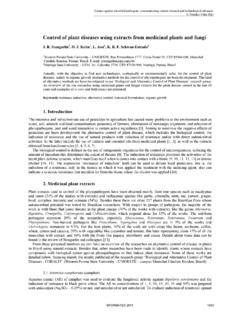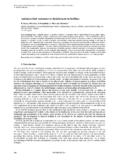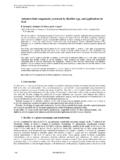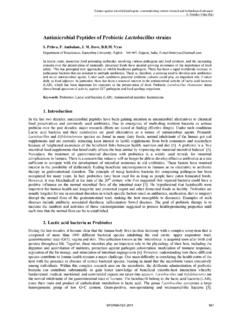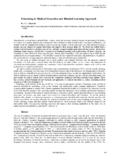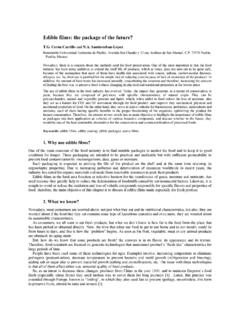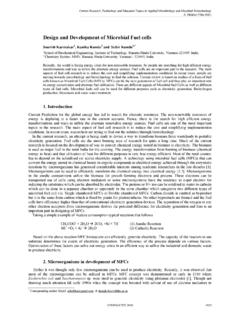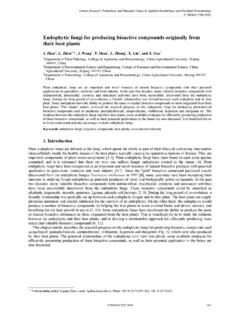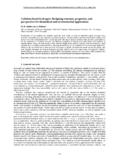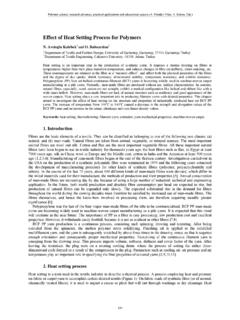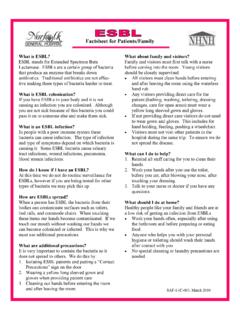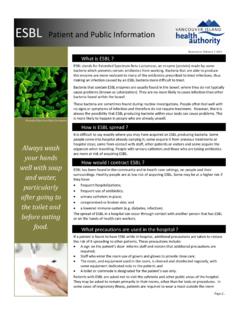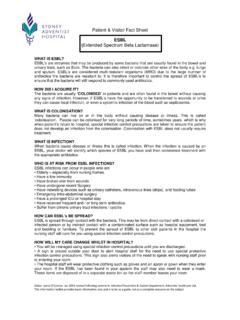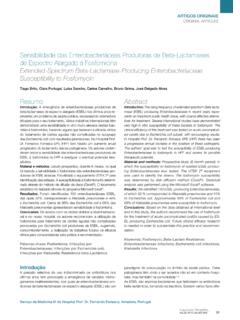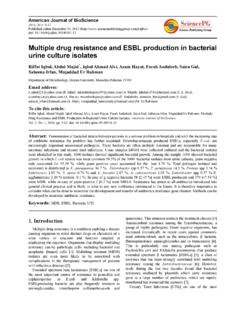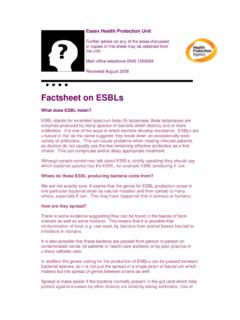Transcription of Antibiotic resistance mechanisms in …
1 Antibiotic resistance mechanisms in enterobacteriaceae B. Kocsis1 and D. Szab 1 1 Institute of Medical Microbiology, Semmelweis University, 1089, Budapest, Nagyv rad t r 4 Hungary enterobacteriaceae species are important human pathogens while increasing number of Antibiotic resistant strains are detected worldwide. The most common Antibiotic resistance in enterobacteriaceae is observed against beta-lactams, fluoroquinolones, aminoglycosides while recently resistance to polymyxins has also appeared. Beta-lactam resistance is mainly conferred by beta-lactamases, capable to hydrolyze beta-lactam antibiotics.
2 The most important beta-lactamases are the cephalosporinases for example extended-spectrum beta-lactamases (ESBLs) and the carbapenemases for example metallo-beta-lactamases (MBLs), Klebsiella pneumoniae carbapenemases (KPCs) and oxacillinase OXA-48 enzymes. Other resistance mechanisms against beta-lactams are the outer membran permeability change and efflux pumps. Fluoroquinolone resistance is caused by aminoacid changes in gyrase and topoisomerase IV enzymes. However, recent studies confirmed the importance of plasmid-mediated quinolone resistance mechanisms including Qnr determinants, aminoglycoside-acetyltransferase(6 )-Ib-cr enzyme and QepA, OqxAB efflux pumps.
3 Aminoglycoside resistance is mainly explained by modifying enzymes inactivating the Antibiotic by acetylation, by adenylation or by phosphorilation. resistance to polymyxins develops by the modification of the target molecule, notably the addition of 4-amino-4-deoxy-l-arabinopyranose on the lipid A component of lipopolysaccharide. The genetic background of resistance mechanisms is diverse since they can be present on chromosomes, plasmids, integrons and transposones. This chapter gives an overview of beta-lactam, fluoroquinolone, aminoglycoside and polymyxin resistance mechanisms in enterobacteriaceae .
4 Keywords beta-lactamases, fluoroquinolone resistance , aminoglycoside resistance , polymyxin resistance 1. Introduction enterobacteriaceae are Gram-negative, rod shaped 1-3 m large bacteria. They are facultative anaerob and their natural host is the human and animal intestine, where they belong to the commensal microbial flora : Escherichia coli, Klebsiella spp., Proteus spp., Morganella spp., Providentia spp., Enterobacter spp., Serratia spp. These bacteria can be pathogens of urinary tract, respiratory tract, bloodstream and wounds. Obligate human intestinal enterobacteriaceae pathogens include Salmonella spp.
5 , Shigella spp. and Yersinia spp. [1, 2, 3]. Infections caused by enterobacteriaceae are treated with antibiotics, and the efficient agents are fluoroquinolones, beta-lactams and aminoglycosides. Fluoroquinolones (ciprofloxacin, norfloxacin and levofloxacin) are potent antibacterial agents, inhibiting the bacterial DNA synthesis by blocking gyrase and topoisomerase IV enzymes. Nalidixic acid is the basic molecule with quinolone ring while the addition of fluor and substituents on it resulted in fluoroquinolones. The beta-lactam antibiotics inhibit cell wall synthesis and the agents with antibacterial activity against enteric bacteria include amoxicillin, ampicillin, piperacillin, ticarcillin each alone or in combination with beta-lactamase inhibitors (clavulanic acid, sulbactam, tazobactam).
6 Extended-spectrum cefalosporins (ceftazidime, cefotaxime, cefepime), carbapenems (imipenem, ertapenem, meropenem) and aztreonam are more potent beta-lactams. Aminoglycoside antibiotics (amikacin, gentamicin, netilmicin and tobramycin) block the protein syntheis of 30s ribosomal subunit while miscellaneous antibiotics namely, colistin (disrupts cell membrane), fosfomycin (inhibits the cell wall synthesis), nitrofurantoin (damages the DNA), trimethoprime and trimethoprime-sulfomethaxazol (inhibit the folic acid synthesis) have considerable antibacterial activity against enteric bacteria.
7 enterobacteriaceae can develop several mechanisms to avoid the inhibitory effect of antibiotics thus becoming resistant. Interpretation of a pathogen as clinically resistant is based on minimal inhibitory concentrations (MICs) of an Antibiotic associated with the antimicrobial activity with a high likelyhood of therapeutic failure [1, 4, 5]. Nowadays, multi-drug resistant strains emerged, possessing several resistant mechanisms against different Antibiotic groups. In this chapter an overview of resistance mechanisms against beta-lactams, fluoroquinolones, aminoglycosides and polymyxins will be given.
8 2. resistance mechansims to beta-lactams resistance to beta-lactams in enterobacteriaceae is mainly conffered by beta-lactamases. These enzymes inactivate beta-lactam antibiotics by hydrolysis. Two classifications of beta-lactamases are known, namely the Ambler and the Bush-Jacoby-Medeiros (Table 1). The Ambler classes are based on the amino acid homology, where they are clustered in four molecular classes namely, A, B, C and D. Molecular classes A, C, and D include the beta-lactamases with serine at their active site, whereas molecular class B stands for metallo-beta-lactamases (MBLs), enzymes with zinc molecule in the active-site.
9 The Bush-Jacoby-Medeiros classification grouped the beta-lactamases in three major groups and 16 subgroups. This classification is based on the substrates and inhibitors of the enzymes [6, 7]. Microbial pathogens and strategies for combating them: science, technology and education (A. M ndez-Vilas, Ed.) FORMATEX 2013_____251 Table 1 Beta-lactamases occuring in enterobacteriaceae Bush-Jacoby-Medeiros classification Ambler classification Distinctive substrate Inhibitor Representative enzyme 1 C cefalosporins none AmpC 2b A penicillins, early cefalosporins beta-lactamase inhibitors TEM-1, TEM-2.
10 TEM-13 SHV-1 2be A extended-spectrum cefalosporins and aztreonam beta-lactamase inhibitors TEM-3, SHV-2, PER, VEB, CTX-M-15 2d D cloxacillin beta-lactamase inhibitors OXA-1, OXA-10 2de D extended-spectrum cefalosporins beta-lactamase inhibitors OXA-11, OXA-15 2df D carbapenems beta-lactamase inhibitors OXA-23, OXA-48 2f A carbapenems beta-lactamase inhibitors KPC, IMI, SME, NMC 3a B carbapenems EDTA MBL [6]
